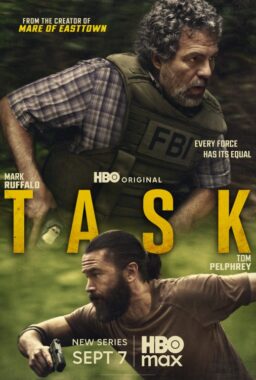“Novitiate” is the first feature film from documentarian Margaret Betts, who wrote and directed a story of a convent in the 1950s, as Vatican II was bringing monumental change to the practices of the Catholic Church. In an interview with RogerEbert.com, Betts talked about being inspired by Audrey Hepburn and what she loved about working on an almost-entirely female production.
The images in the movie are exquisitely composed. As a director, all that black and white must have been both an opportunity and a challenge.
I have to give a huge amount of credit to Kat Westergaard, my DP. We worked together on my documentary and short film, too. We started talking about what this should look like three years before, when I was still writing it. We thought that with a nun movie, a religious movie, people might expect grays and a heavy, cold-feeling environment and that would make it not very appealing. We wanted, borrowing a lot from Fred Zinnemann’s “A Nun’s Story,” to make it over-glamorous, lush, with pageantry. From a technical standpoint, you have the monochrome, the black and white, and it’s very difficult to expose so we can see the faces. Some scenes are very dark and it took so long to figure out how to light it. You’d have this line of nuns and it was all black and white, this monochromatic world, and then we would halo Margaret [Qualley’s] face a little. Any rooms we could paint ourselves, like her childhood home, we used color to help her face pop more than the other people.
You mention “A Nun’s Story” in the film. One of the girls says that seeing that movie made her want to become a nun.
That movie inspired a whole generation of girls to become nuns. It was released during the same time period where our movie was set.
I wanted to make an edgy contemporary “Nun’s Story.” I loved Audrey Hepburn. She was my favorite when I was growing up. I loved “Sabrina,” “Breakfast at Tiffany’s,” and for “The Nun’s Story,” the novitiate and wedding scenes in that film, the ones I watched the most, inspired parts of “Novitiate.” As did a documentary of that era on YouTube with a newscaster interviewing girls who are becoming nuns.
What kind of research did you do?
I found this whole canon of ex-nun memoirs, and they mainly describe being young girls, sharing a last cigarette in the back of a cab before they go in for the first time or sneaking out to the sanctuary in the middle of the night to drink the wine. But they were in love with God. They talk about Jesus like a matinee idol. They project every ideal and quality on their idea of Him. It was important that the girls in the movie seem like teenagers.
Also, in that era you would either marry a guy from high school or be a spinster. The images of marriage they saw around them scared the hell out of them.
I wish that the movie could have had two parts because I learned that Vatican II set off this whole feminist movement within the Catholic world, really fascinating.
The convent in the movie is especially strict, isolating all of its nuns. Was it based on a particular order?
It is fictionalized, but based in part on cloistered orders that were isolated so that you would rid yourself of the self and become an empty vessel to be filled with Christ’s love. You die to the outside world. In some of the convents you were not allowed to talk about your family or your memories from home.

Your cast was extraordinary, even those with very small parts. How do you work with your actors?
I am always open to what they want to bring to the role, very collaborative. The cast made some significant changes that brought more depth to the characters. I had no idea when I cast Denis O’Hare, I just knew he was one of the greatest actors that there is, but he grew up Catholic and had a rich background. Even though he is only in one scene he developed this whole idea that his character is like a politician, he wanted to get ahead, he is on the rise, he wants to become a bishop and embracing Vatican II is a way to help him advance, get a better post, and this woman, the Mother Superior played by Melissa Leo, is a pain in his ass, he has never really liked her, and now she is a threat to his ambitions. Denis came up with that and he understood how you rise up in these roles inside the church. He said that this guy has got his eye on some job a couple of steps ahead. That was not in the script but he really created a full character.
Melissa Leo is such a forceful person. Her character is so powerful and so controlling but there will always be this tension and conflict that she has to diminish herself for the church. We discussed her being this innately powerful person and the struggle to be constantly diminishing and diminishing and diminishing herself. She is so passionate. She did a lot of research, too, but so much of it is intuitive with her. She is really method, which is very intimidating at times. I really wanted her to have a nice hotel room, with a kitchen and everything, and really worked hard to make sure she would have everything she needed. And then, a week into filming, she said, “I want to move into the convent.” And she stayed in a room that was about 300 square feet, with nothing.
She’s the hardest-working woman in the room and she’s proud of it. Acting is her church and she is as devoted as the Reverend Mother is.
I love Julianne Nicholson [who plays the atheist single mother of Cathleen, the young novitiate played by Margaret Qualley]. Her work is so beautiful and she is such a beautiful person, the coolest woman, so funny and so easy-going. The way I wrote that character was way more stereotypical. I wanted that Madonna/whore divide between the church and the mother, so Cathleen would have to decide what she wanted to be.
Julianne did something that blew my mind. I think the second scene we shot with her was when she comes to visit Cathleen at the convent and they talk with the grate between them. Margaret is just 20, very young, totally unknown, this is her first movie. Julianne is a seasoned actress, in her 40’s. She did something without changing a word of the dialog I wrote that I would never have imagined. It almost makes me cry to remember it. She gave all the power in the scene to the girl. The way the mother hangs on every word, that vulnerability, so desperate for the connection that has been lost. I didn’t write that, we never discussed it, and everyone was just crying behind the monitor watching her. This mom just loves this kid so much. She’s messed up in so many ways. She did thinks that she shouldn’t, but Cathleen is all that she’s got in the world. It broke my heart the way she did that, and it was her invention, her heart.
Margaret Qualley fought like hell with me for the to end the way it did. We shot an extra six minutes for the end of the movie after her being at the altar, with a little voiceover. I liked it. She just kept hounding me about ending it at the altar, just going to black, and I was like, “You’re twenty years old. Thanks, but you don’t know what you’re talking about.” In a loving way, but she was scrappy. Then when we finally got to the edit, our editor was Susan Morse, she’s incredible, and we had already cut the whole thing and she and her assistants said we had to end it at the altar, and I had to text Margaret, “I guess I have to let you say, ‘I told you so.’”
Does it make a difference on the set that almost the entire cast and crew was women?
It was awesome. It was a super-collaborative environment, even the extras. My understanding is that there is normally a lot of power jockeying on movie sets and conflict between divisions: “You know you’re not supposed to be that that prop on this truck!” A lot of sparring. We were not like that. Every department head was a woman except for our amazing set designer, John Sanders. The way I direct is that I make it clear you can come to me with anything. The amount of details that are really magical that came entirely from the actors is huge, and that was because they were encouraged to bring ideas. I knew what my story was, so sometimes it was, “I don’t think that will work, but bring me another idea.” I just like working with women.












